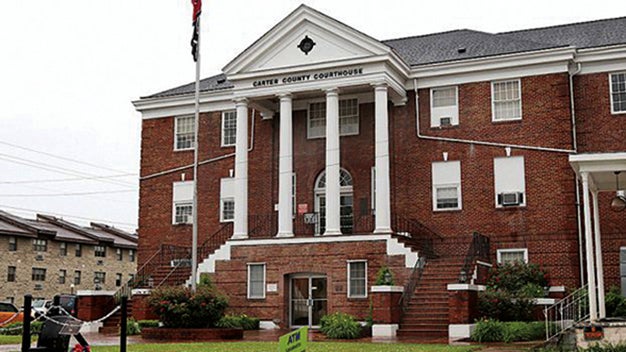Chronic absenteeism discussion hindered by misconceptions, officials say
Published 8:07 am Wednesday, September 25, 2019

- Star Photo/Ambe rWadovick Chairman Jerry Stout and Co-chairman Tony Garland were among those present when the board approved the first reading of the new parent call-in policy. The board will vote on the second reading during their December meeting, so it will go into effect in the spring semester.
The Attendance Policy for Carter County Schools has been a hot-button topic in recent board meetings over the past few months, and even though the board passed the first reading of the new policy last week, officials say there are still misconceptions surrounding the motivation behind the changes and when they will take effect.
The discussions center around chronic absenteeism in county schools, which Secondary Supervisor Danny McClain defined as missing 10 percent or more of a given school year.
“It does not matter if they are excused or unexcused,” McClain said.
Federal Projects Director Jerri Nave said, with snow days built into Carter County’s calendar, a given school year is about 167 days, meaning a student can only miss 16 days before they fall under the definition.
“For the 2018/2019 school year, we were at about 23.5 percent,” Nave said. “This was an improvement over last year.”
This means a little less than a quarter of Carter County students missed at least 16 days of school, regardless of the reason.
This number is pronounced, she said, when compared to neighboring school districts of similar demographics: Sullivan and Johnson counties, both of which rank at a little less than 10 percent.
This is bad, they said, because more time missed at school means less time learning what McClain called “soft skills,” such as timeliness, teamwork and more.
They said the increased focus on the subject this year is due to the state’s recent accountability system, which now includes chronic absenteeism as a goal for districts to reduce however possible.
“You have an annual manageable number based on the previous year,” she said. “We reached our goal last year.”
She said the school district’s goal this year, as determined by the state, is about 20.6 percent.
There the conversations began. Since first bringing the topics to the board, discussions have revolved around three main points, Nave said: the policies themselves, parent education about those policies and positive incentives to encourage students and parents to abide by the new policies.
After a chronic absenteeism committee met during the summer, the new limit on parent call-ins came before the school board on September 19, which passed the first hearing. Instead of doing three parent call-ins per semester, the school board is moving towards allowing two per year.
The move has not continued without criticism, however.
“There have been some misconceptions,” McClain said. ”No policies have been changed at this point.”
Some of the criticism has focused around health-related issues, in particular during flu season, which can knock entire classrooms out for several days.
“People think this is about sickness,” Nave said. “The data shows a lot of [call-ins] are not health-related.”
She said families often call-in for an entire week for vacations, or miss random, one-off days, and while sickness is something they looked into, she said their data shows it is not the primary reason for such a high absenteeism rate.
“Children are going to be sick,” she said. “That is not part of the issue.”
Further, McClain said they certainly do not expect children to come to school with the flu or other contagious illnesses.
Some other criticisms have centered around how strict the new policy sounds, effectively cutting the number of call-ins to a third of what they used to be.
“Greene County, at the high school level, allows zero [call-ins], and the K-8 level allows two,” McClain said. “Johnson County allows zero.”
Compared to those counties, he said, the new system is still lenient towards parents.
As for what happens once students need to begin making up those missed days, they said time-for-time is still in the discussion phase, as there is no clear definition on what such a policy would even look like.
“This is not something we want to just jump into,” he said.
Nave said it can be tough having to play a numbers game while also recognizing the people behind those numbers, and said she wants parents to understand that challenge.
“I do not think we will lose track of that,” she said. “As a parent, if I had questions, I would contact the school. They can help you understand.”
McClain said any policy about time-for-time would go into effect next fall at the absolute earliest.
“We will always work with any student if there are extenuating circumstances,” McClain said. “This is not about truancy. We already have systems in place for that.”
The next school board workshop will take place Tuesday, October 22. These meetings are open for the public to both attend and comment during.





